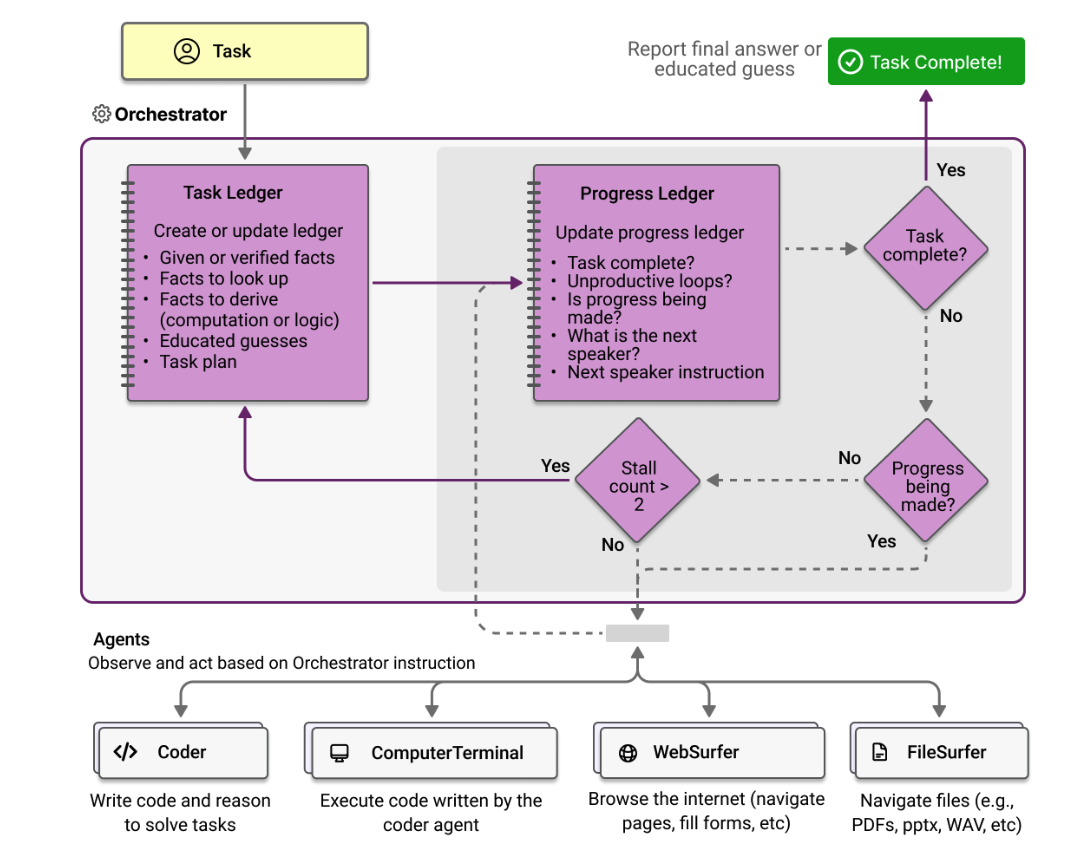
Join our daily and weekly newsletters for the latest updates and exclusive content on industry-leading AI coverage. Learn More
Microsoft has quietly built the largest enterprise AI agent ecosystem, with over 100,000 organizations creating or editing AI agents through its Copilot Studio since launch – a milestone that positions the company ahead in one of enterprise tech’s most closely watched and exciting segments.
“That’s a lot faster than we thought, and it’s a lot faster than any other kind of cutting edge technology we’ve released,” Charles Lamanna, Microsoft’s executive responsible for the company’s agent vision, told VentureBeat. “And that was like a 2x growth in just a quarter.”
The rapid adoption comes as Microsoft significantly expands its agent capabilities. At its Ignite conference starting today, the company announced it will allow enterprises to use any of the 1,800 large language models (LLMs) in the Azure catalog within these agents – a significant move beyond its exclusive reliance on OpenAI’s models. The company also unveiled autonomous agents that can work independently, detecting events and orchestrating complex workflows with minimal human oversight. (See our full coverage of today’s Microsoft’s agent announcements here.)
These AI agents – software that can reason and perform specific business tasks using generative AI – are emerging as a powerful tool for enterprise automation and productivity. Microsoft’s platform enables organizations to build these agents for tasks ranging from customer service to complex business process automation, while maintaining enterprise-grade security and governance.
Building an enterprise-grade foundation
Microsoft’s early lead in AI agents stems from its focus on enterprise requirements that often get overlooked in the AI hype cycle. While its new autonomous agents and LLM flexibility grabbed headlines at Ignite, the company’s real advantage lies in its enterprise infrastructure.
The platform integrates with over 1,400 enterprise systems and data sources, from SAP to ServiceNow to SQL databases. This extensive connectivity lets organizations build agents that can access and act on data across their existing IT landscape. While enterprises can build custom agents from scratch, Microsoft has also launched ten pre-built autonomous agents targeting core business functions like sales, service, finance, and supply chain – to accelerate adoption for common enterprise use cases.
The company did not provide any more detail about which types of agents customers are finding the most popular. But Lamanna said that aside from apps that IT departments are building for specific core tasks, there was a second category of apps that is more bottoms-up. This is where employees create Copilot agents to share their documents or presentations with their team or other partners, so that others can interact with the content and ask questions about it.
Security and governance features, often afterthoughts in AI deployments, are built into Microsoft’s core architecture. The platform’s control system ensures agents operate within enterprise permissions and data governance frameworks.
“We think it will show up everywhere,” Lamanna told VentureBeat, “because whenever you have a technology that makes something possible that was previously impossible, all of you kind of are always shocked by how broadly it ends up being used.” He compared it with the Internet, where connectivity extended from the browser to the operating system, and fundamentally changed client-server architecture.
The LLM made a big breakthrough, Lamanna explains, in that it understands unstructured content – language or video or audio – and has shown the beginnings of reasoning, to make conclusions or judgments based on this data, Lamanna said. “So the browser, word processor, the core operating system experience, and the way you do sales processes and customer support processes – they all have to be reevaluated now that this capability exists…I don’t think there’ll be really any part of the stack in computing that doesn’t have some component reimagined as a result of all the agent and AI capabilities.”
Early adopters are already seeing results. McKinsey reduced its project intake workflows from 20 days to just 2 days using automated routing agents. Pets at Home deployed fraud prevention agents in under two weeks, saving millions annually. Other companies using Copilot Studio include Nsure, McKinsey, Standard Bank, Thomson Reuters, Virgin Money, Clifford Chance and Zurich, Microsoft told VentureBeat.
The Agent mesh: Microsoft’s vision for enterprise AI
At the heart of Microsoft’s strategy is what Lamanna calls the “agent mesh” – an interconnected system where AI agents collaborate to solve complex problems. Rather than operating in isolation, agents can pass tasks, messages, and knowledge seamlessly across the enterprise.
Copilot Studio has been associated so far with agents that are triggered via chat, but now Microsoft is emphasizing any kind of actions. Imagine an enterprise where agents collaborate seamlessly: A sales agent triggers an inventory agent to check stock availability, which then notifies a customer service agent to update the client. This architecture includes:
- Autonomous agents that detect events and trigger actions without human oversight
- An orchestration layer that coordinates multiple specialized agents
- Real-time monitoring tools that provide transparency into agent workflows
Microsoft’s research arm recently released the Magnetic-One system based on the company’s Autogen framework, which establishes a sophisticated agent hierarchy: a managing agent maintains task checklists in an “outer loop” while specialized agents execute work in an “inner loop.” This architecture could potentially soon embrace tools like Microsoft’s OmniParser that let agents interpret UI elements, and showcases Microsoft’s technical lead in computer-using agents — matching capabilities being developed by Anthropic and Google. The company said it is working to bring this research into production, but did not specify how and when.

Microsoft’s approach addresses a key enterprise challenge: scaling from hundreds to potentially millions of agents while maintaining control. The platform enables companies to coordinate multiple specialized agents through its orchestration capabilities – an approach that aligns with a broader industry trend toward multi-agent systems.
The platform’s pricing model reflects this enterprise focus. Rather than charging per token like most AI providers, Microsoft Copilot studio prices based on the number of messages exchanged – emphasizing business outcomes over raw compute. Companies are no longer asking about which model is best, Lamanna explained. They’re asking for examples of business value. “That has been a remarkable shift in the market.”
The race for enterprise AI agents
While other tech giants are investing heavily in AI agents, Microsoft’s combination of enterprise features and extensive integrations gives it an early advantage. Competitors like Salesforce and ServiceNow have introduced their own AI agent platforms, such as Agentforce (which boasted 10,000 agents built) and ServiceNow Agents, but these offerings are relatively new and lack Microsoft’s established enterprise reach: Hundreds of millions of workers use Microsoft’s productivity suite.
The competitor landscape includes various approaches. OpenAI focuses on direct API access but hasn’t yet built an enterprise AI agent deployment framework, though its recent o1-preview model shows superior reasoning capabilities that could power more intelligent agents in the future. New entrants like Crew offer experimental agentic frameworks but lack enterprise scale. LangChain’s modular framework remains popular among developers but focuses more on experimentation than enterprise-grade deployment. AWS maintains a developer-focused approach through platforms like SageMaker, while Google’s AI platforms show strength in specific verticals but lack a cohesive agent framework for broad enterprise adoption.
By contrast, Microsoft combines enterprise security, low-code tools, pre-built templates, and pro-code SDKs for developers, making it a more inclusive option for diverse teams. It has also spent considerable time doing the hard work of making its various application and analytical databases integrated, so that AI agents can call on any enterprise data natively, rather than doing separate calls to databases for retrieval-augmented generation (RAG) purposes (see Microsoft’s announcement today about integrating transactional databases).
However, the AI agent technology remains nascent. Large language models can still hallucinate, and AI agents that rely on them need careful installation and management to avoid issues like infinite loops or unnecessary costs. Some customers have expressed concerns about Copilot’s pricing and implementation challenges.
The field is also likely to remain fragmented. A significant subset of Fortune 500 companies may opt for multi-vendor approaches, potentially using Microsoft’s Copilot agents for employee productivity while choosing other frameworks for sensitive applications.
Conclusion: Leading the agent-driven enterprise
While Microsoft leads in enterprise AI agent deployment today, the technology remains in early stages. The company’s advantage stems not from any single feature but from its comprehensive approach: enterprise-grade infrastructure, extensive integrations, and focus on business outcomes rather than raw AI capabilities.
The coming year will test whether Microsoft can maintain this lead. Competitors are racing to enhance their offerings. Enterprises are moving from experimentation to full deployment. What’s clear is that AI agents are moving beyond the hype cycle into the reality of enterprise IT architecture – with all the complexity and challenges that transition entails.
For technical leaders, now is the time to evaluate how AI agents can transform your workflows, from automating repetitive tasks to enabling new modes of collaboration. Start small, focus on measurable outcomes, and consider pre-built agents first to accelerate your journey.
Watch the full interview with Charles Lamanna embedded above to hear firsthand how Microsoft is driving the AI revolution, what AI agents mean for enterprise architecture, the rise of ContentOps, and how its affecting roles and job functions.
Source link




